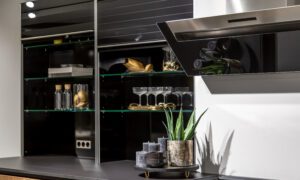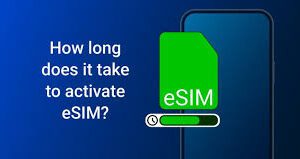Introduction
Living in a small space doesn’t mean sacrificing your fitness goals, especially when it comes to strengthening your back. The back is a crucial muscle group that supports posture, spinal health, and daily functional movements. Luckily, there is a wide range of compact, effective, and smart exercise equipment available today that helps you build a strong back without cluttering your living space.
This article explores the best compact back exercise equipment for small spaces and offers practical advice for selecting the right tools for your fitness needs.
Why Back Exercises Matter
Many people experience back pain due to poor posture, long hours of sitting, or a sedentary lifestyle. Strengthening your back muscles can help alleviate and prevent these issues.
Key Benefits of Back Exercises:
- Improved posture
- Reduced risk of injury
- Enhanced functional strength
- Spinal support and alignment
- Better mobility and flexibility
Incorporating targeted exercises into your routine ensures that your back muscles remain balanced and capable of handling daily physical demands.
Choosing the Right Equipment for Small Spaces
When space is limited, every piece of equipment should serve a purpose. Here are some important features to consider when shopping for compact back exercise tools:
- Portability: Choose gear that is lightweight or foldable for easy storage.
- Versatility: Multifunctional tools save both space and money.
- Ease of Use: Simple mechanisms and intuitive designs encourage regular use.
- Durability: Quality materials ensure your equipment lasts even with daily use.
Top Compact Equipment for Back Exercises
Let’s explore the best options that blend function, convenience, and minimal space usage.
1. Resistance Bands
Why They Work: Resistance bands are incredibly space-efficient and offer a full range of motion to target the lats, traps, and rhomboids. They’re ideal for exercises like seated rows, lat pulldowns, and reverse flyes.
Benefits:
- Lightweight and portable
- Inexpensive
- Easy to attach to doors or anchor points
- Provide progressive resistance for strength training
2. Adjustable Dumbbells
Why They Work: Adjustable dumbbells replace multiple sets of traditional weights, allowing you to perform bent-over rows, shrugs, and deadlifts without a bulky rack.
Benefits:
- Save space and money
- Ideal for progressive training
- Can be stored under a bed or in a closet
Recommended Exercises: Bent-over rows, single-arm rows, renegade rows
3. Pull-Up Bars (Doorway or Wall-Mounted)
Why They Work: Pull-ups and chin-ups are some of the most effective bodyweight exercises for building a strong back. Doorway pull-up bars are easy to install and remove.
Benefits:
- No floor space required
- Strengthens upper back, lats, and arms
- Can support multiple grip positions
4. Smart Home Gym Systems
Why They Work: Modern smart gyms provide digital weight systems with customizable resistance and guided back workouts.
Benefits:
- Compact vertical design
- Tracks progress and form in real time
- Offers full-body and back-specific routines
- No bulky weight plates needed
Tip: Smart gyms often come with pre-installed programs for back workouts, including virtual trainers and adaptive resistance modes. You can find more info on Speediance’s blog here.
5. Rowing Machines (Compact or Foldable)
Why They Work: Rowing is a low-impact exercise that heavily engages your back, especially the lats and lower traps.
Benefits:
- Offers cardio and strength in one session
- Folds up for storage
- Great for full-body endurance
6. Back Extension Benches
Why They Work: These benches target the lower back and are essential for correcting posture and spinal alignment.
Benefits:
- Focuses on lumbar strength
- Many models fold flat
- Can improve core and glute strength too
Recommended Use: Hyperextensions, glute-ham raises
Combining Equipment for a Balanced Back Routine
Having compact gear is only part of the equation. Here’s how to build a solid back workout routine with minimal equipment:
Beginner Routine (20 Minutes):
- Resistance Band Rows – 3 sets of 15
- Doorway Pull-ups – 3 sets of 5 (use a band for assistance if needed)
- Dumbbell Shrugs – 3 sets of 12
- Superman Holds – 3 sets of 30 seconds
Advanced Routine (30 Minutes):
- Rowing Machine – 10 minutes
- Dumbbell Bent-over Rows – 3 sets of 12
- Pull-ups – 3 sets to failure
- Back Extensions – 3 sets of 15
Remember, proper form is critical. Even with the best equipment, incorrect posture or technique can lead to injury. Consider using a mirror or smart gym that offers real-time feedback.
Tips for Making the Most of Small-Space Workouts
- Declutter your space: Clear an area for safe movement during workouts.
- Use vertical storage: Wall hooks and under-bed boxes can store gear.
- Establish a routine: Allocate specific days and times for back-focused workouts.
- Track your progress: Use apps or smart gyms to log your results and stay motivated.
Conclusion
A strong, healthy back is possible—even in the smallest of living spaces. With compact, multifunctional equipment like resistance bands, adjustable dumbbells, and smart home gym systems, you can perform effective back workouts without compromising space or convenience. Whether you’re a beginner or an experienced fitness enthusiast, investing in the right tools and building a consistent routine will yield long-term health benefits.
Explore modern options like Speediance smart home gym solution and other smart gym platforms to elevate your back workouts and bring the gym experience into your home, no matter how small it is.



































